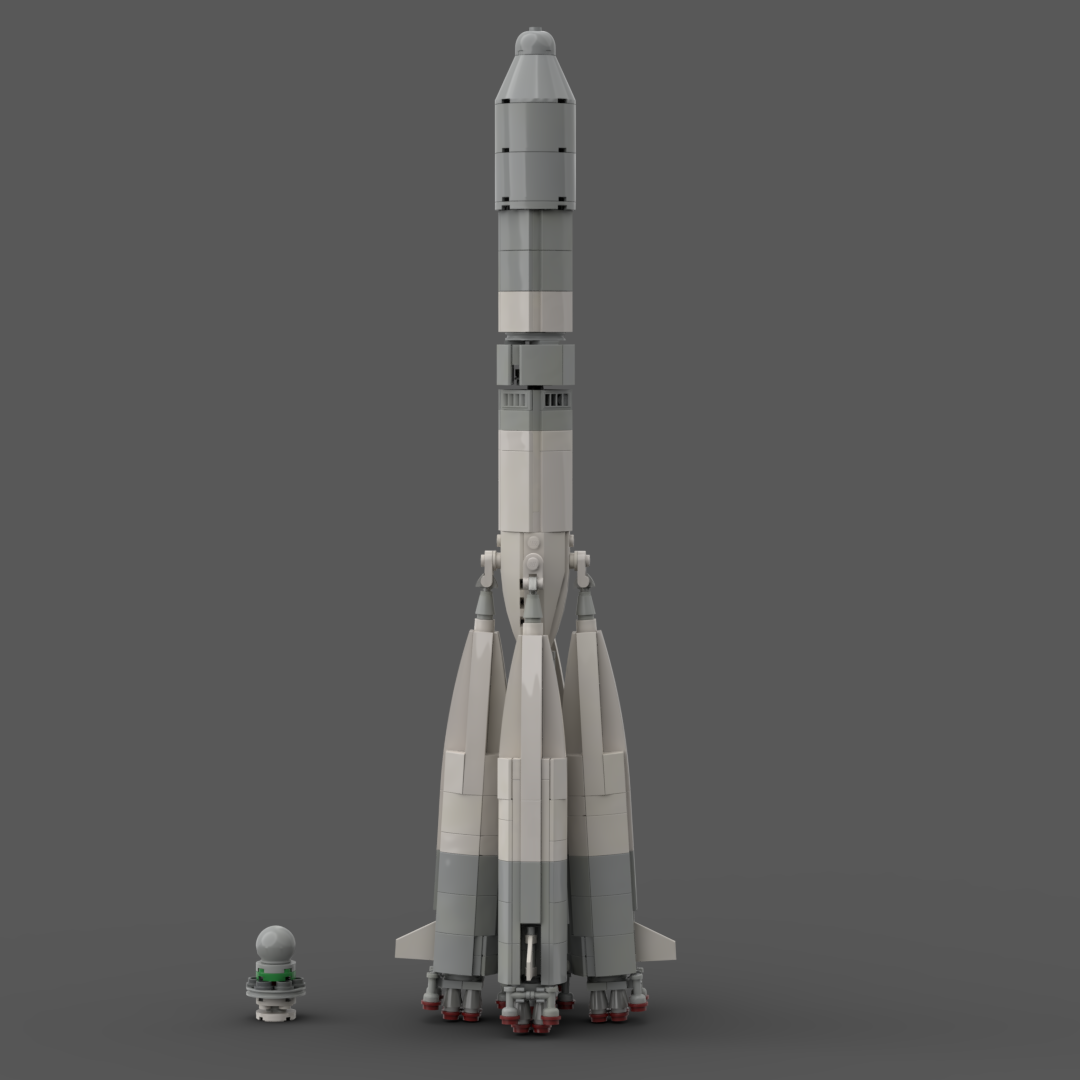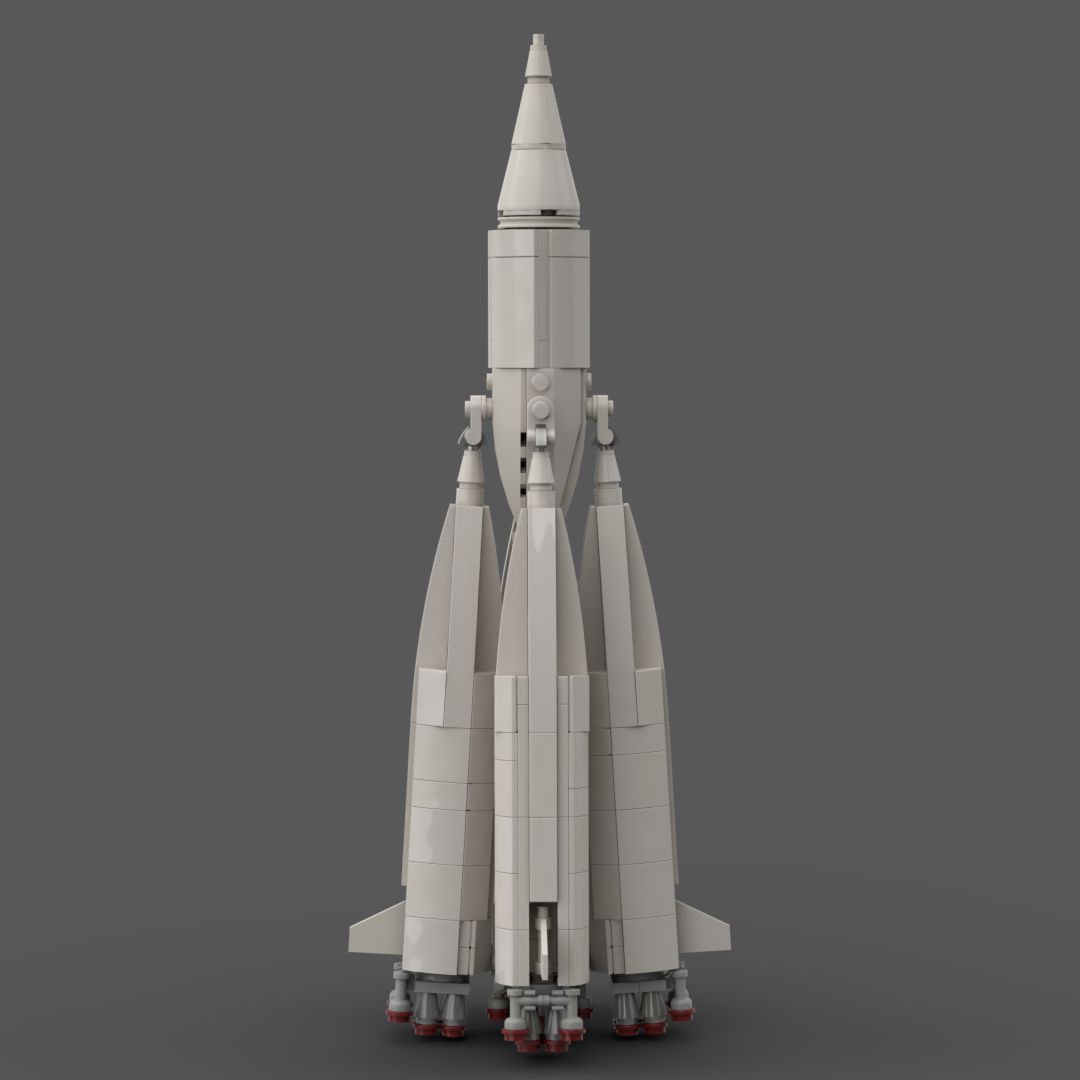
LEGO Designer:
Sam Bradford (0 Gravity Bricks)
Designed:
June 2020
Categories:
Manned Spaceflight, All, Launch Vehicles, Medium Lift Launch Vehicle, Space Agency - Roscosmos
Launch Vehicle Details
Stages:
Length:
Diameter:
Mass at Launch:
Low Earth Orbit Capacity:
Total Thrust:
Apogee:
Class:
The Voskhod programme was the second Soviet human spaceflight project. Two one-day crewed missions were flown using the Voskhod spacecraft and rocket, one in 1964 and one in 1965, and two dogs flew on a 22-day mission in 1966.
Voskhod development was both a follow-on to the Vostok programme and a recycling of components left over from that programme’s cancellation following its first six flights. The Voskhod programme was superseded by the Soyuz programme.
The Voskhod spacecraft was basically a Vostok spacecraft that had a backup, solid-fueled retrorocket added to the top of the descent module. As it was much heavier, the launch vehicle would be the 11A57, a Molniya 8K78M with the Blok L stage removed and later the basis of the Soyuz booster. The ejection seat was removed and two or three crew couches were added to the interior at a 90-degree angle to that of the Vostok crew position. However, the position of the in-flight controls was not changed, so the crew had to crane their heads 90° to see the instruments.
In the case of Voskhod 2, an inflatable exterior airlock was also added to the descent module opposite the entry hatch. The airlock was jettisoned after use. This apparatus was needed because the vehicle avionics and environmental systems were air-cooled, and depressurization in orbit would cause overheating. A solid-fueled braking rocket was also added to the parachute lines to provide for a softer landing at touchdown. This was necessary because, unlike the Vostok, the Voskhod descent module landed with the crewmen still inside.
Unlike Vostok and the later Soyuz, Voskhod had no launch abort system, meaning that the crew lacked any means of escape from a malfunctioning launch vehicle.
Voskhod had a solid-fueled backup retrorocket on top of the capsule in case the main one failed (as it did on Voskhod 2). While Vostok lacked this feature, it was not considered a problem since the spacecraft would decay from orbit within 10 days. Relatively lightweight Voskhod was well below the 11A57 booster’s lift capacity, meaning that it launched into a much higher orbit and would not decay as quickly.
| Launch | Date | Duration | Landing | Crew | Notes |
| Voskhod 1 | 12 October 1964 | 1d 0h 17m | 13 October 1964 | V. Komarov, K. Feoktistov, B. Yegorov | First multiman spacecraft. |
| Voskhod 2 | 18 March 1965 | 1d 2h 2m | 19 March 1965 | P. Belyayev, A. Leonov | First spacewalk. |
Designer Notes
Part count: 599 bricks, 70 lots.
| Unit | width | length | height |
|---|---|---|---|
| Studs | 14.4 | 14.4 | 49.3 |
| Centimetres | 11.5 | 11.5 | 39.5 |
| Inches | 4.5 | 4.5 | 15.5 |
Downloads
Pay what you feel
This digital model is provided free of charge. However, if you like it, and you would like to thank the designer for their time, please consider a donation of your choice. 100% of your donation will go directly to the designer.
Donations can be made by following this link:
Part count: 599 bricks, 70 lots.
| Unit | width | length | height |
|---|---|---|---|
| Studs | 14.4 | 14.4 | 49.3 |
| Inches | 4.5 | 4.5 | 15.5 |
| Centimetres | 11.5 | 11.5 | 39.5 |
No external URL provided.
Launch History information from space.skyrocket.de
Launch History information from space.skyrocket.de


